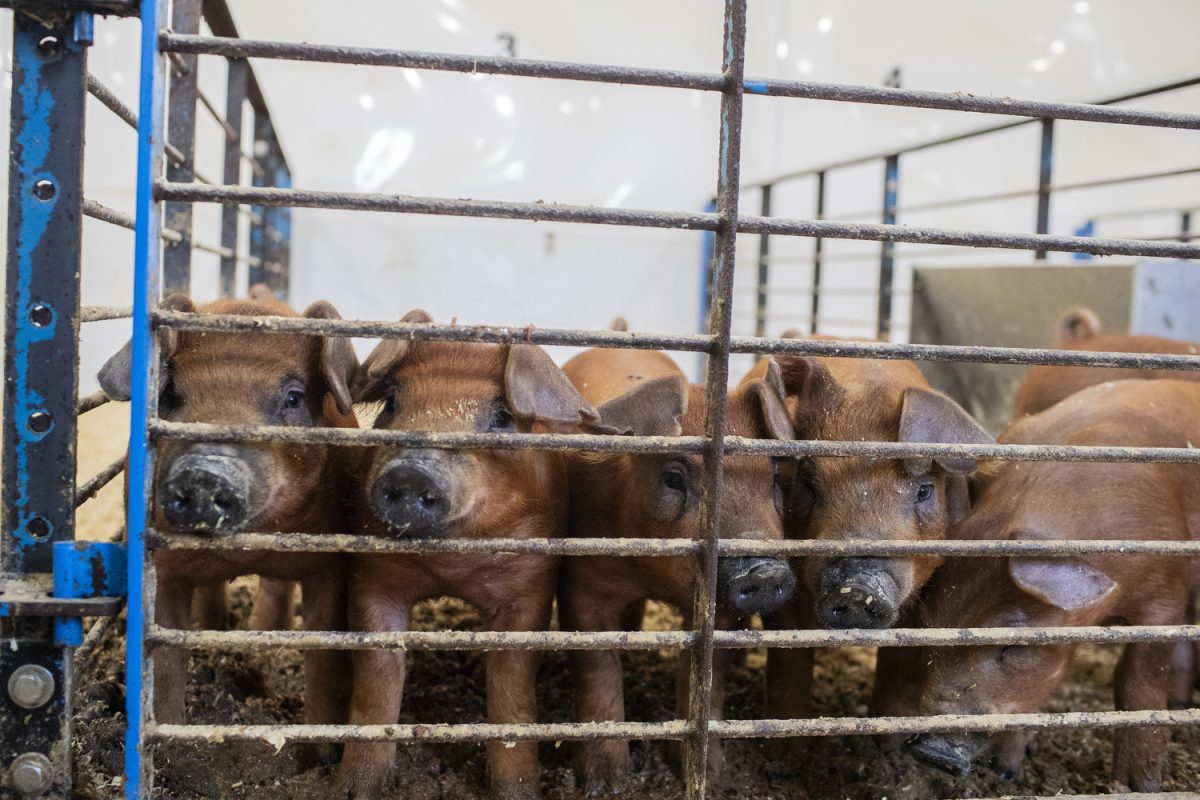As economic pressures continue to affect various industries and consumers’ wallets, hog farming in Johnson County and the rest of Iowa is seeing some of its worst losses in the last 25 years.
For Jim Thompson, a livestock farmer outside of West Branch, just 20 minutes east of Iowa City, the losses are sustainable as long as the job is done right.
“The people who are good at raising pigs will make money. Those who watch their bottom line, who are doing everything they can to keep their pigs as healthy and comfortable as possible, will affect their final outcome,” Thompson said.
This year was forecasted to be the second of two years in the worst period of profitability for hog farmers since the 1990s, according to a 2023 Iowa State study.
Thompson said national pork prices have gone up relatively little since the 1990s, but increased efficiencies, such as larger litter sizes for infant pigs and the ability to harvest more meat, have led to a substantial increase in supply.
“You can have the most superior genetics of pigs, but if you as a person and a producer are not providing them the environment or lifestyle they are bred to be in, to the best of your ability, that’s where you will see losses you won’t really recognize,” Thompson said.
Thompson said livestock markets allow individuals little control, so those in the business must save and plan for when the market is less than fortuitous.
However, demand and supply as market indicators are contributing to mounting economic pressures for hog farmers in the Johnson County area and the rest of Iowa.
According to the recently released USDA Census of Agriculture, hog farmers in Johnson County are second in number only to cattle farmers, who are in ranging enterprises such as dairy. The USDA has found that there are 186 hog operations in the county.
Lee Schulz, extension economist for Iowa State University, wrote in an October 2023 article that 2024 losses for hog farmers could amount to $18 per hog, compared to $32 in 2023. In the article, he focused on the nature that agriculture is largely cyclical.
In fact, April has been showing an upturn that might push the market to average at near-break-even prices. Prices are up by 10-30 percent for various pork products so far in April, according to Pork Checkoff.
Schulz illustrates cycles in agriculture within his article. He wrote that hog farmers saw record profits in 2014 of $51 per hog, which indicates the permanence of investments for some farmers.
“If you look back 30 to 40 years, hog production used to be something that producers were in when it was profitable, and not when it wasn’t,” Schulz said in an interview with The Daily Iowan.
He said this level of fixity, or the ability to sell property or machinery while making a profit, is recent in the market is recent.
Schulz said when the market reaches a downtrend in its life cycle, those who cannot adapt their operations will face the consequences of fewer profits. The downtrend in this case is decreasing consumer demand, Schulz said.
“You would think the producers would stop producing, but due to these investments, it is more difficult to do that,” Schulz said.
In a 2013 article written by Schulz and another Iowa State professor of economics, Chad Hart, pork consumption had faced a steady and continuous decline in Iowa, and by extension, Johnson County. That decline has continued into 2024.
However, there have been very recent upturns in the market, and Richard Foster, president of the Prepared Foods group of JBS Foods, a multinational meat processing corporation, said pork producers in Iowa need only hold out for the market to reach a point of equilibrium.
“If I am a pork producer in Iowa, maybe the worst is over for now,” Foster said.



